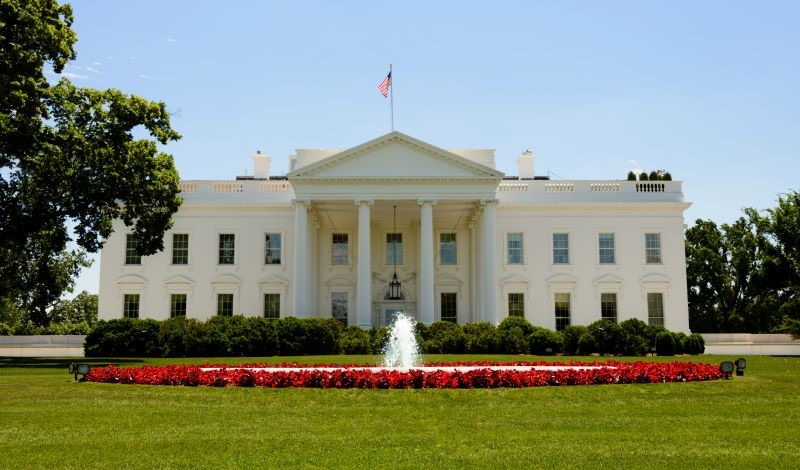
President Trump’s latest legislative victory reveals an inefficient approach to deregulating markets.
Efficient government policymaking recognizes when it is, and when it is not, socially desirable to intervene in markets. Thus, efficient policymakers would choose not to regulate non-government entities if market forces can produce a more efficient outcome than a prior government intervention. For example, when deregulating the airline industry in 1978, policymakers benefited air travelers by giving airlines the freedom to set fares and to enter routes they wanted to serve. The increase in competition led to lower fares and improved service.
Efficient policymakers reform, but do not withdraw, their policies to encourage certain behaviors by non-governmental entities when a government policy intervention would improve on market performance. For example, the Federal Trade Commission benefited the public by creating a National Do Not Call Registry and giving households the choice of whether to receive calls from telemarketers.
President Donald J. Trump’s recently enacted megalaw—or law—could have improved government efficiency both by withdrawing economic regulations from industries where market forces could produce more efficient outcomes than regulatory interventions and by reforming certain policies to improve their efficiency. However, the law does not attempt to accomplish either objective. This choice indicates that President Trump’s anti-government, but not pro-market, approach to policymaking is nihilistic and does not bode well for the nation’s material quality of life.
Several presidents before President Trump supported increasing market competition through legislation that deregulated U.S. industries and expanded free trade. President Gerald R. Ford supported initiatives leading to transportation deregulation. President Jimmy Carter signed legislation advancing deregulation of the airline, trucking, railroad, natural gas, and banking industries. President Ronald Reagan signed legislation deregulating interstate bus transportation, the savings and loan industry, and cable television. President Bill Clinton persuaded the U.S. Congress to pass the North American Free Trade Agreement and furthered deregulation of telecommunications, branch banking, and intrastate trucking. President Barack Obama spearheaded the Trans-Pacific Partnership with Asian countries, excluding China, and the Transatlantic Trade and Investment Partnership with the European Union.
President Trump did not build on those deregulatory successes in his first term, and the law does not include economic deregulation initiatives. President Trump could have led the effort to deregulate, for instance, current prices, entry, and exit in the global airline industry by persuading countries to grant cabotage rights, which would allow any airline to serve any country’s domestic routes and to charge any fares they wanted. For example, United Airlines would be free to serve New York to Pisa, Italy, by offering non-stop flights from New York to Rome and its own connecting flights from Rome to Pisa, reducing travelers’ transfer-wait time in Rome. Foreign airlines would be free to serve any U.S. domestic and international route, which would increase competition, reduce fares, and improve service frequency in the United States and throughout the world.
But, despite the potential benefits to U.S. travelers from global airline deregulation, the law does not include it. It also does not include ocean shipping deregulation, which President Trump explored in his first term by considering whether to eliminate the Jones Act. President Trump subsequently decided against eliminating it for unknown reasons.
The law reveals that President Trump generally does not withdraw a government intervention because he envisions a superior market solution. Instead, he withdraws the intervention because he has little faith in government, especially his Democratic predecessors, which is consistent with his disinterest in government regulatory reform.
For example, the tax credits instituted under the Biden Administration for the purchase of new or used electric vehicles will be eliminated by the law on September 30, 2025. This elimination is a step in the right direction of regulatory reform because the tax credits are an inefficient approach to reducing pollution, relying on taxpayer-funded subsidies that benefit vehicle manufacturers and households with above-average incomes instead of relying on user charges paid by motorists who are polluting the environment. Replacing tax credits with efficient emissions taxes would be appropriate regulatory reform because it would incentivize all motorists to drive cleaner-burning gasoline vehicles and would spur some motorists to purchase electric vehicles. And, although tax credits add to the federal deficit, emissions tax revenues could be used to help reduce the federal deficit.
However, the law “deregulates” policies to reduce automobile emissions and eschews efficient regulatory reform. In other words, although motor vehicle emissions are widely recognized by conservative and liberal economists as a textbook example of a negative externality that causes adverse health effects, including neurological, cardiovascular, respiratory, reproductive, and immune system damage, they are ignored by the law.
President Trump also forecloses a possible market approach to reducing automobile emissions. Currently, Chinese electric vehicle producers collectively possess the largest market share of electric vehicles in the world. BYD Auto, a Chinese producer, has frequently surpassed Tesla in global electric vehicle sales—including both battery electric vehicles and plug-in hybrids. High tariffs and stringent regulations combine, however, to create significant barriers for Chinese producers aiming to sell electric vehicles in the United States.
The United States could greatly spur domestic sales of electric vehicles to help improve the environment by allowing Chinese producers to sell their vehicles in the United States, provided they manufacture their electric vehicles in America to address concerns about job losses, not receive subsidies from the Chinese government to address concerns about competitive disadvantages, and address the U.S. government’s security concerns.
Japanese automobile firms transformed the U.S. automobile market by building manufacturing plants in the United States in the 1980s and selling high-quality, fuel-efficient vehicles. Consumers benefited from the improvement in vehicle price-quality offerings, and U.S. automobile firms were incentivized to improve the quality of their vehicles. The entry of Chinese automobile firms could have a similar positive effect on the U.S. automobile market while helping to address an important social problem.
Yet, because President Trump is not drawn to market solutions—nor does he believe it is the government’s responsibility to address a negative externality efficiently—he ignores the approach, as does the law. The law does, however, enable President Trump to fulfill his nihilistic vision.




